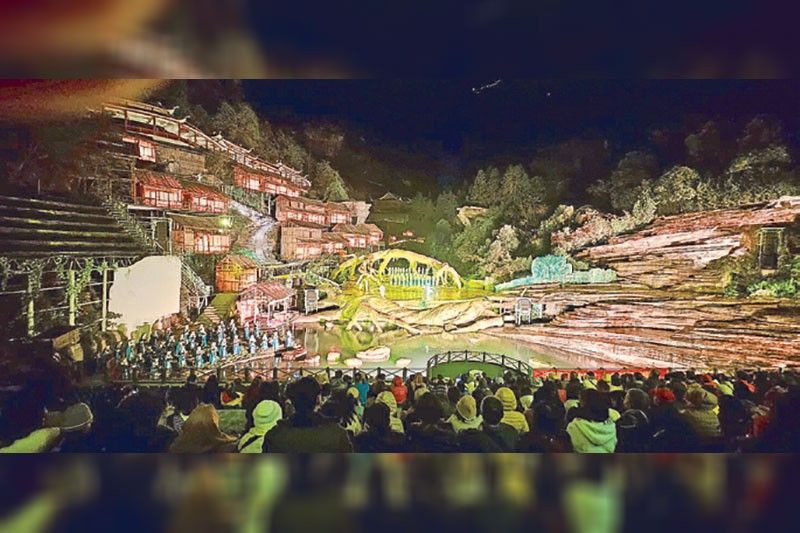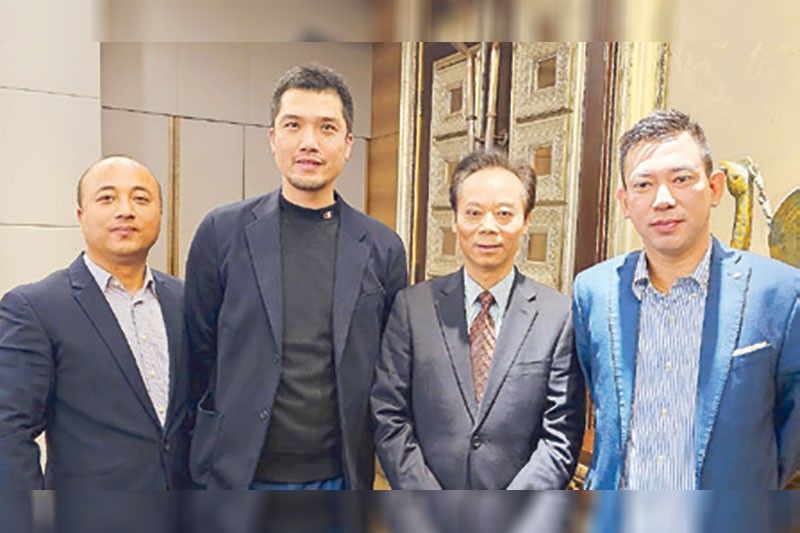Exploring China’s “Avatar’ forest

The entire Wulingyuan Scenic and Historic Interest Area in Zhangjiajie in the Northwest of China’s Hunan province is a UNESCO World Heritage Site (there are currently 1199 on the list with six in the Philippines). The area stretches more than 26,400 hectares and is dominated by over 3,000 narrow sandstone pillars and peaks, many higher than 200 meters. Between the peaks lie ravines and gorges with streams, pools and waterfalls, some 40 caves, and two large, natural bridges. The beautiful landscape is made more mystical by the mists and clouds surrounding the site, which is home to several endangered plant and animal species.
One of the wonders in this area is the mountain located within the eponymous Tianmen Mountain National Park. This is where Heaven’s Door is. It is a cave that is 131.5 meters tall, 57 meters wide, and 60 meters deep. It used to be an ordinary cave and was called Songliang Mountain until the year 263, when one face of the cliff collapsed and created a door-like opening. The name was then changed to Tianmen, meaning “sacred.”

Today, this gateway has become one of the most iconic structures in Hunan and is now the world’s highest, naturally formed arch. The “door” is accessible via a 999-step staircase that climbs straight to the base of the hole. Nine is one lucky number in many Chinese cultures. One way to get there is via Tongtian Avenue, an 11-kilometer road with 99 bends. The other way is via a cable car touted to be the longest passenger cableway of high mountains in the world, with 98 cars and a total length of 7,455 meters and ascent of 1,279 meters.
Tourists on Tianmen who dare to can walk on a vertigo-inducing, 328-foot-long glass walkway called the “Coiling Dragon Cliff,” a suspended, glass-bottomed path at the top of Tianmen Mountain in Zhangjiajie National Forest Park. This see-through walkway is over 1,400 meters high, is only 5.24 feet wide, and overlooks Tongtian Avenue!

Zhangjiajie National Forest Park is one of several national parks within the Wulingyuan Scenic Area. It is where the “Avatar Forest” (named after the blockbuster movie) is located. The film’s director and production designers said that they drew inspiration from mountains from around the world, including those in this national park, which was recognized as China’s first national forest park in 1982. With an area of 4,810 hectares, Zhangjiajie National Forest Park is also part of the much larger UNESCO World Heritage Wulingyuan Scenic Area.
In 2004, Zhangjiajie Geopark was also listed as a UNESCO Global Geopark (there are currently 195 in 48 countries), defined by UNESCO as “single, unified geographical areas where sites and landscapes of international geological significance are managed with a holistic concept of protection, education and sustainable development.”
The very interesting lift to get to the Avatar Forest is the Bailong Elevator (literally Hundred Dragons Elevator), a glass, double-deck elevator built onto the side of a cliff, which is 326 meters high. It was recognized by Guinness World Records as the world’s tallest outdoor elevator in July 2015 and is supposed to be the fastest outdoor passenger elevator with the largest loading capacity. These elevators make the speedy ascent in around a minute and a half. Once up, you see the pillar-like formations — the result of many years of physical erosion and weathering that forms them. The weather is moist year-round, so foliage is dense on these pillars. The weathered material is carried away primarily by streams. These formations are distinct in a Chinese landscape that can be found in many Chinese paintings.
The park’s 1,080-meter Southern Sky Column was renamed “Avatar Hallelujah Mountain” in honor of the movie in January 2010. Photos cannot convey how beautiful the place is.
Another big attraction is the Zhangjiajie Glass Bridge. Built as a tourist attraction, the two-inch thick, tempered glass-bottomed bridge is the longest and tallest in the world. It opened in 2016 and measures 430 meters in length, six meters wide, and is suspended about 300 meters above the ground. The bridge spans a canyon between two mountain cliffs in the National Forest Park and can carry up to 800 visitors at a time.
A short bus ride away is Baofeng Lake, an artificial freshwater lake and reservoir created in the 1970s. The picture-perfect lake surrounded by forested stone peaks has an average depth of 72 meters and length of 2.5 kilometers. A short downward walk from here will lead you to Baoling Lake Park, where the Baofeng Waterfall is.
We enjoyed something cultural as well and watched the Tianmen Fox Fairy Show, a spectacular living landscape show set in a humongous outdoor theater at the foot of Tianmen Mountain. The musical drama tells a tortuous folk story of love between a man and a fox (that becomes human). The show has been performed over 2,800 times to more than 4 million people since it opened in 2009. The main stage is on a five-km-long canyon 1000 meters above sea level. With a cast of hundreds and state-of-the-art lighting and sound systems, this show is a must.
Unlike taking a flight from Guangzhou to Xiangjiajie, we took the bullet train on the way back to Guangzhou this time and enjoyed our last meal on the Southern China trip: dim sum! Here’s a tip: Guangzhou Restaurant, a Cantonese restaurant established in 1935, has a branch in the international airport, so check in and have a meal before boarding your flight.
Note that the trip has a lot of walking and a lot of up-and-down trails in the mountains, so this is not suggested for the elderly, but I do hope readers will be able to do this amazing trip. It’s something truly extraordinary.
* * *
Inquire about the Zhangjiajie/Guangzhou tour through Travel Warehouse, Inc. at 8687-2490 to 92 or email [email protected] . Check out https://twi.com.ph/. Special thanks to UOS Travel. Cebu Pacific flies to Guangzhou three times weekly as well as Shanghai, Beijing, and Xiamen, China.
Follow me on Instagram @pepperteehankee.
- Latest



























